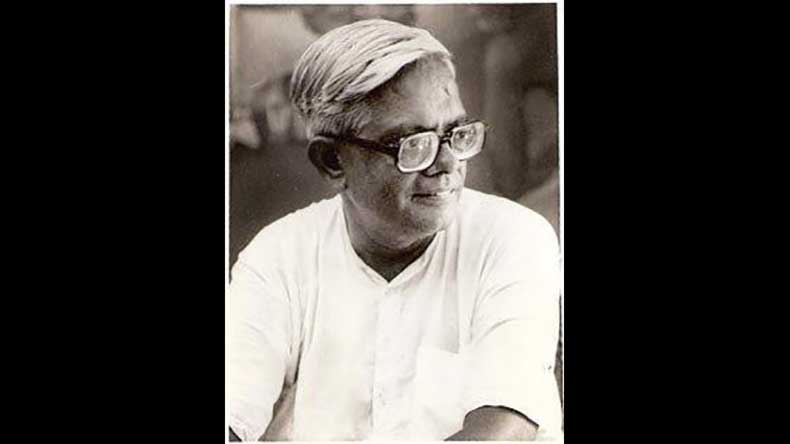Tate Modern, London’s towering museum of modern art, is just closing Bhupen Khakhar’s first international retrospective of paintings since his death, covering five decades. Born in Mumbai in 1934 Khakhar moved to then small town of Vadodara to learn accountancy and away from his traditional family his art blossomed.The early figurative work is a charming reinterpretation of Indian miniatures, he takes the colours and scenery from miniatures and contrasts it with contemporary people. He loved the minutiae of Indian provincial living; he liked to genuinely understand his humble subjects, as the series of “Trade Paintings” show, the window cleaner, tailor, hairdresser and watchmaker, Khakhar spent time seeing life through their eyes.
He visited England in 1976 and in 1979, he taught here and noted some depression in British working classlives, he also found the freedom to live openly as a gay man and express himself through his art. As his style and talent developed he got bolder, moresatirical and unconstrained. According to the excellent 1983 British Film Institute film “Messages from Bhupen Khakhar” there was a period of 6 years during which he did not sell a painting;at that time Khakhar said his paintings sold better in America and Europe than in India. Today his paintings are gathered here from museums and private collections around the world, including many in Delhi and one in Bangalore.
He visited England in 1976and in 1979, he taught here and noted some depression in British working classlives, he also found the freedom to live openly as a gay man.
For his own amusement he wrote short stories in Gujurati and travel diaries in watercolour, three unique concertinaed sketch book exhibits of his travels in Shri Lanka depict elephants, coconut palms and Buddhist sites, all seen through moody weather from a bus window. Windows and grills feature in so many paintings, looking in and looking out, the division between a personal or a public life, or one looking thoughtfully at the other.
He was greatly inspired by Guru Jayanti, the Ramayana and Hindu religious practices, he was interested in mystical Bhakti spiritual traditions and his paintings of homosexual relationships and couples emit astonishing tenderness. In the 1990’s he suffered from cataracts and his brushwork became blurry, looser and allowed him to depict scenes suggestive of same-sex marriage and encounters, as he recovered his painting returned to a more naïve figurative style. There is an X rated room with a small collection of fairly explicit paintings most of which are on loan from an anonymous private collection, perhaps a sign that the stigma of homosexuality that haunted the sensitive artist, regrettably still exists today.
Before he died in 2003 from prostate cancer that had violently metastasized, he painted a collection of agonizing paintings with a cartoon like edge that bring his satirical quality to the fore in tackling difficult subjects. Clearly he had experienced pain during cancer treatment and hypocrisy during his life as an Indian homosexual living with existential colonial laws that criminalise homosexuality. Nevertheless and thankfully Khakhar’s quirky and authentic representations of aspects of real Indian everyday life remaincaptured in oil as surely as they would have been in a photograph at the time.

